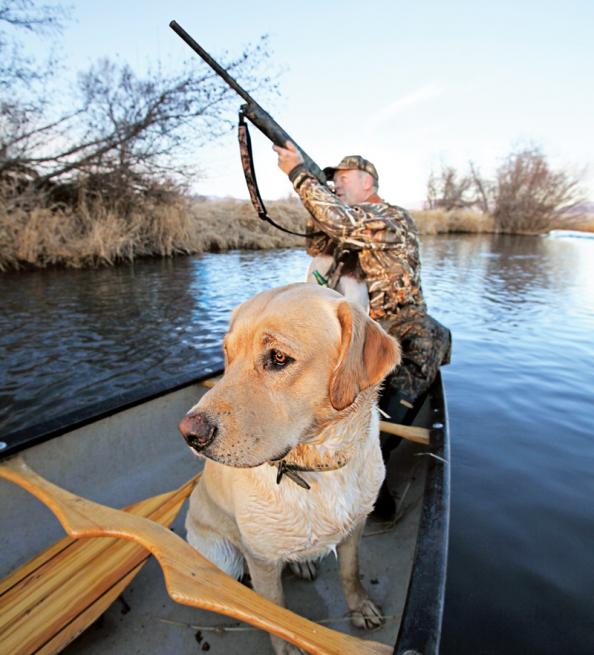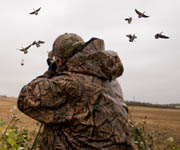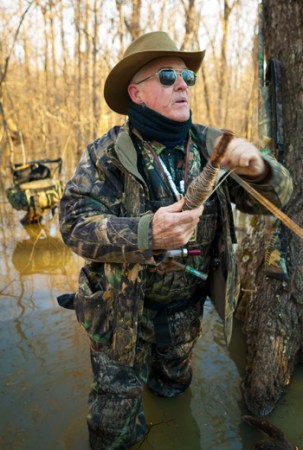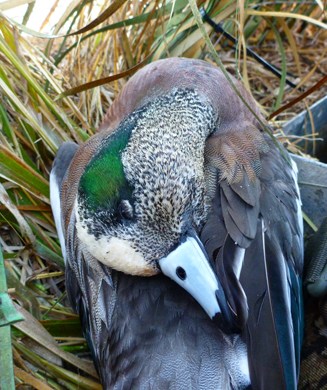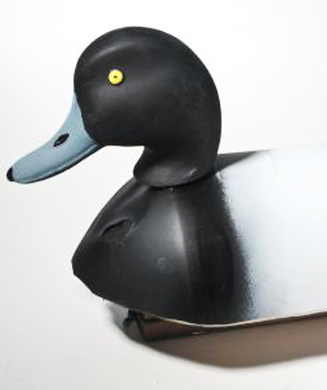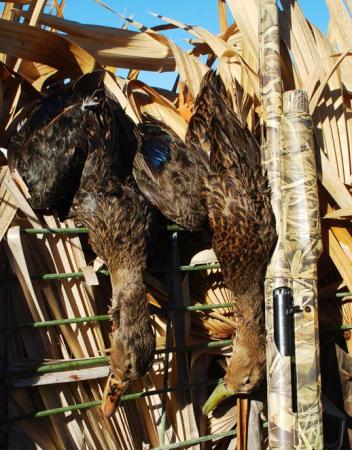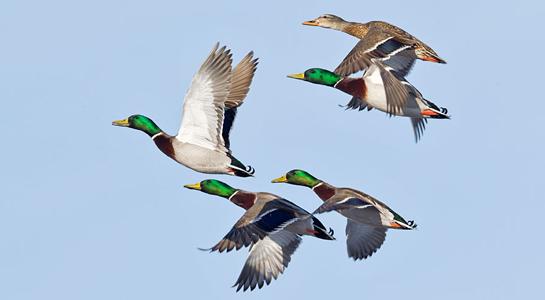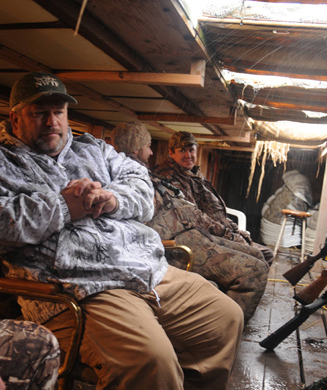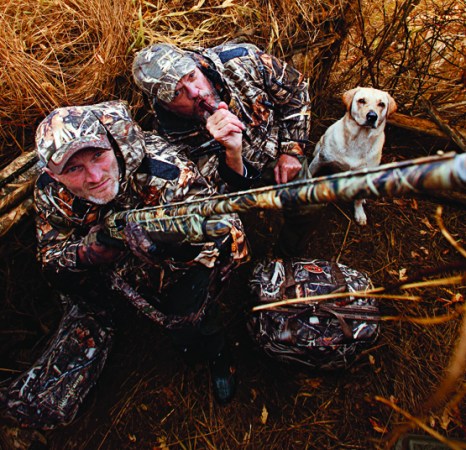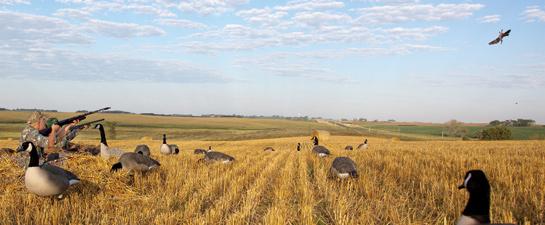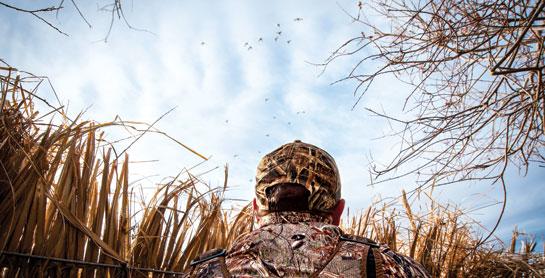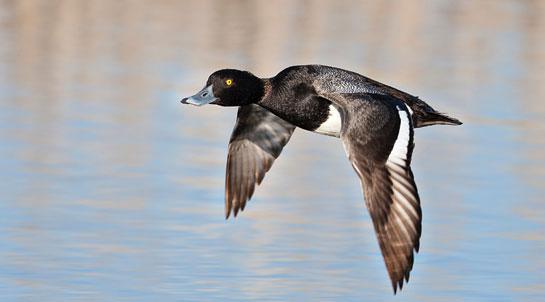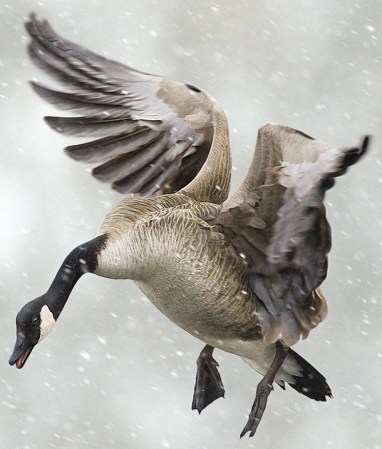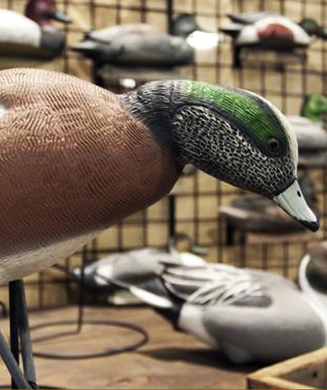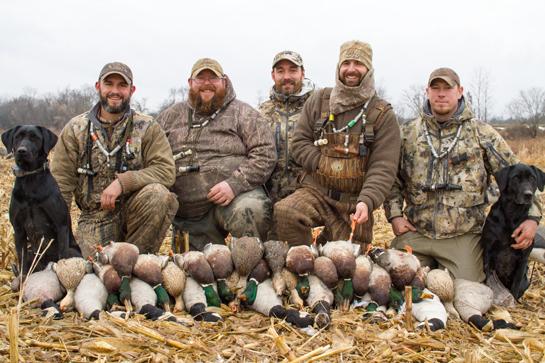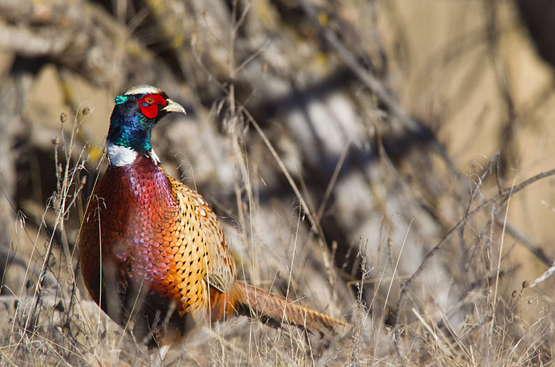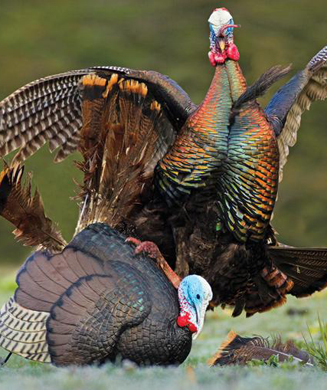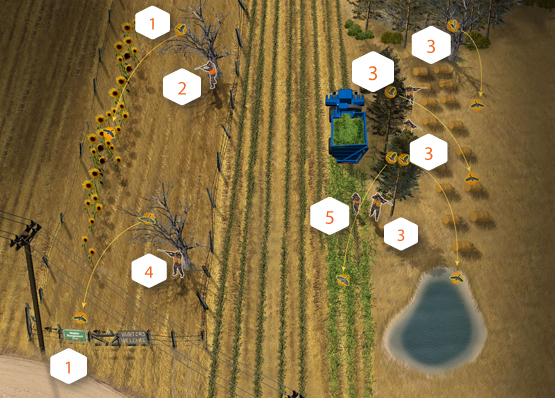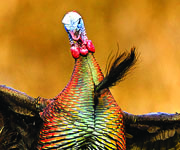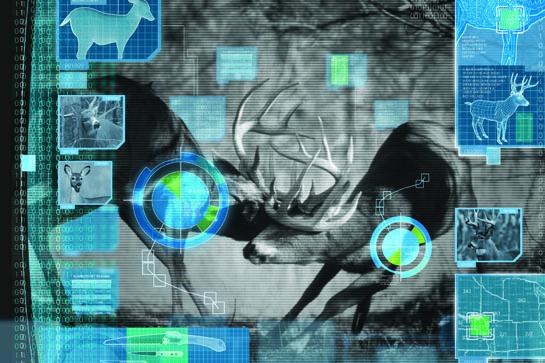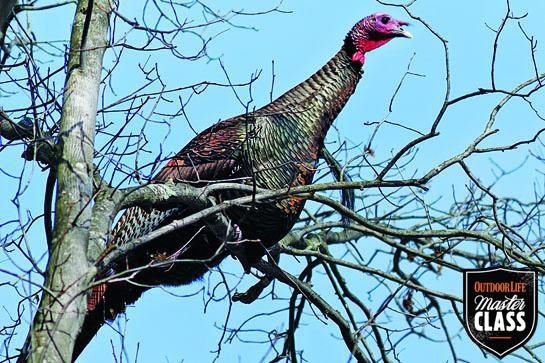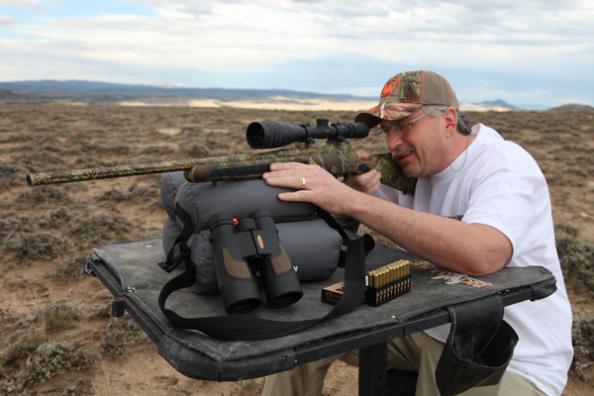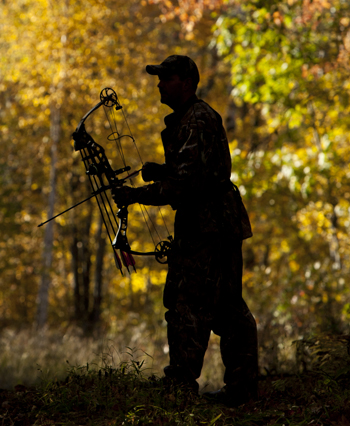If practical limitations, such as monetary concerns, or even life-preserving cares, like spousal contentment, keep you from joining the ranks of wannabe professionals with trailers splashed with decals, rest assured that a simpler path to ducks exists.
Hunting like a beginner, with little if any gear, can pay dividends and save you the hassle–and cash layout–of messing with decoys and blinds.
Remain mobile and simplify your next waterfowl hunt by keeping these tips in mind.
1) Spot and Stalk
Take a page from the big-game hunter’s playbook and glass bodies of water or fields for loafing ducks and geese, and then stalk your way to a shot.
The key to remaining unseen on the approach is the same as when you’re pursuing a trophy mule deer in the wide-open West: Use the natural terrain and cover to conceal yourself. Follow high banks and other raised contours, hide behind tall vegetation, belly-crawl through the thin stuff–whatever you have to do to remain unseen.
To keep your bearings as you move between hiding places, make a mental note of landmarks near your target’s location. Slowly work your way toward loitering waterfowl, approaching from downwind if possible to help conceal audible missteps and to slow the ascent of fleeing ducks and geese.
2) Find a Field
Locate a field that has ducks or geese feeding in it consistently. You need to know exactly where the birds are landing. This goes beyond simply finding the “X” of a field–it requires that you pinpoint the exact center of the letter. If you’re off by even 50 yards, you’ll be out of position, and without the help of decoys you won’t be able to pull birds in.
“You have to start scouting before the birds get to the field so you know exactly where they’re coming in,” says Pennsylvania’s Mark Spence, a pro staffer with Final Approach. “A lot of times they land in a field and move as they feed. If you get there to scout an hour after they land, and then try to set up in that spot the next day, they’re going to land out of range.”
When pinpointing landing spots, note the direction of approach, exactly when and where they touch down, and where they move after they’re on the ground.
3) Get a Bird-Dog Buddy
A good hunting buddy is like a good spouse; sometimes sacrifices need to be made in order to maintain a happy relationship.
When hunting a creek holding waterfowl, send your buddy on a stalk so that he is upstream of the birds. If he can get close enough, he might get a shot off. But the birds should begin swimming downstream and then alight down the channel–right into your shooting zone.
4) Walk on Water
Wary of ground predators, waterfowl are much more lax in guarding against attacks taking place from the water. With a small watercraft, such as a canoe, kayak, or specially designed low-profile sneak boat, you can approach ducks and geese unnoticed for close-in action.
Bends in the river tend to hold ducks nearby; get into position prior to turning the corner. Lying low and lifting your head just enough to peer over the edge to scan upcoming water will allow you to float right into resting and feeding flocks. Muted earth-tone colors help keep your boat inconspicuous.
**
5) Be the King of a Hill**
Pass-shooting is another technique that lets you skip the decoys and the blinds.
When ducks and geese move between roosting and feeding areas, they often follow topographical funnels, especially when feeding fields are positioned above roosting ponds. Gaining significant elevation quickly can be troublesome, particularly for geese. By positioning yourself on a hillside within a low-lying funnel, you can take shots at passing birds.
The key is finding the flight paths, and that requires scouting–and lots of it. At daybreak, watch as birds leave roosting waters. Note the direction of travel and try to ascertain their destination. Look at a topographical map or GPS and mark possible ambush points. Low-impact hunting of this nature can result in more access to property than if you have hundreds of decoys and several layout blinds stashed in a trailer behind your truck.
Photo: Denver Bryan

